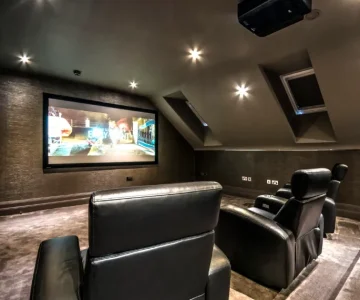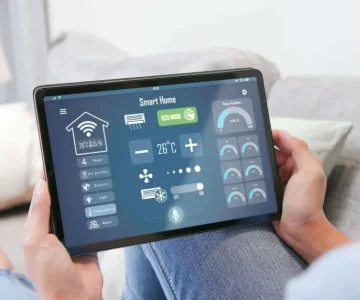Turning your home into a smart home can feel overwhelming at first. With an ever-expanding selection of devices and technologies, it’s easy to wonder where to begin. The good news is, you can start small or go all-in—what matters most is understanding your needs and creating a plan that works for your lifestyle.
What Exactly Is a Smart Home?
A smart home uses connected technology to automate and control daily tasks. This can range from simple devices like a plug that turns your lamp on at sunset to fully integrated systems that manage lighting, security, temperature, and more—all from one hub or app. Many systems allow remote access via the internet, meaning you can adjust your thermostat, lock your doors, or turn on the lights even when you’re miles away.
Beyond convenience, smart home setups can save energy, reduce costs, and add extra layers of security. Some households also incorporate eco-friendly features, like solar panels, to further cut utility bills.
Deciding What You Need
Before you buy anything, think about your priorities. Do you want to control lighting and appliances from your phone? Monitor energy usage? Extend your system outdoors for garden lighting and irrigation? Are you looking for robust security with remote camera access? Defining your goals early will help you choose devices that align with your vision.
Popular Smart Home Devices
The market offers a huge range of gadgets, from thermostats and cameras to door locks, smart speakers, and lighting controls. It’s worth researching products and reading reviews before making a purchase. That way, you’ll know your investment will deliver both quality and compatibility.
Starting Small vs. Full Integration
If you’d rather ease into smart living, start with one or two devices—maybe a smart thermostat or a few smart bulbs—and add more over time. This approach spreads out costs and gives you a chance to get comfortable with the technology.
Alternatively, you can install a complete system all at once. While this requires a higher upfront investment, it ensures everything is designed to work together from day one. This is especially practical during a home build or renovation, as wiring and other infrastructure can be incorporated seamlessly into the design.
Planning Your System
Once you’ve chosen a control method—whether that’s a smartphone app, a voice assistant like Google Assistant, or a dedicated hub—plan how your devices will connect and interact. A well-planned system not only meets your current needs but also allows for future expansion without compatibility headaches.
Types of Smart Home Solutions
- Security & Access Control – Video doorbells, smart locks, and connected cameras let you see who’s at the door, grant access remotely, and keep tabs on your property.
- Lighting & Ambience – Control indoor and outdoor lighting with your voice or phone. Pair it with smart speakers for music throughout your home.
- Climate Control – Program heating and cooling schedules, adjust temperatures remotely, or use geofencing so the system reacts to your location.
- Kitchen Automation – From fridges that track grocery supplies to ovens that preheat before you arrive home, smart kitchens make meal prep easier.
- Pet Care – Smart feeders, water dispensers, and temperature monitors help you look after pets when you’re not there.
Avoiding Compatibility Issues
One common challenge is making sure all devices work well together. Some hubs and platforms are more selective about which brands they support. Before buying, check compatibility lists to avoid frustration later.
With careful planning and the right choices, your smart home can bring you convenience, efficiency, and peace of mind—tailored perfectly to the way you live.





